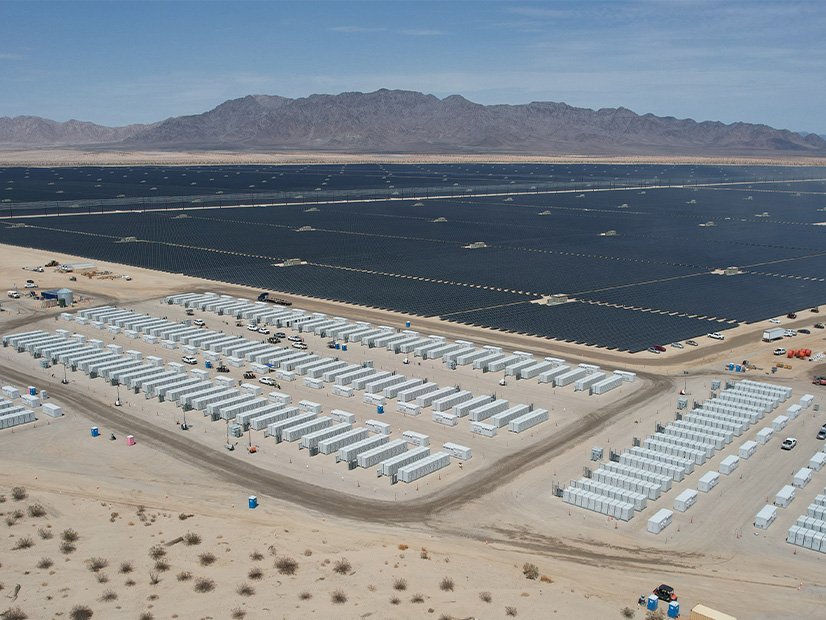
A new CAISO proposal seeks to address unwarranted bid cost recovery (BCR) payments to storage resources, an issue that has stirred controversy over the past month.
The proposal, which CAISO presented at an Aug. 5 workshop, is part of Track 1 of CAISO’s new Storage Bid Cost Recovery and Default Energy Bids Enhancements, which began July 8 and has been criticized by stakeholders for its “aggressive timeline.” (See CAISO Kicks Off Storage Bid Cost Recovery Stakeholder Initiative.) A final proposal is scheduled for a board vote Sept. 26.
“This is a very complicated issue with a lot of moving parts, and I do appreciate that there could be a significant amount of economic burden that’s being introduced into the market because of this, but I really do agree that we should slow down,” Josh Arnold, senior market and operations analyst at Customized Energy Solutions, said during the Aug. 5 meeting. “It’s an incredibly complicated system and I think in some cases it has been oversimplified.”
The initiative aims to address what the ISO identified as unusually high BCR payments to storage resources, despite the payments not being aligned with the intent of BCR.
As noted in the ISO’s July 26 straw proposal, BCR was created with conventional assets in mind, meaning it doesn’t consider storage resources’ opportunity costs or state-of-charge (SOC) constraints. The differentiated treatment of unavailable energy, the proposal says, has led to two primary concerns: that storage assets aren’t exposed to real-time prices for deviating from day-ahead schedules due to SOC constraints, and that it creates incentives for resources to bid inefficiently to maximize a combined BCR and market payment.
CAISO’s proposal seeks to address the problem of a storage resource being unable to meet a day-ahead schedule due to an SOC constraint. In that case, the market instructs the storage asset to a 0-MW dispatch because of the SOC being binding, categorizing the energy as “optimal” and making it eligible for BCR.
“Our proposal is really to define that dispatch that is unavailable due to state-of-charge constraints in the binding interval as non-optimal energy, meaning that it would not be eligible for BCR,” Sergio Dueñas Melendez, storage sector manager at CAISO, said in the meeting. “We believe that this will materially limit the chances of unwarranted BCR derived from buy- or sell-backs of the day-ahead schedule.”
Because the proposal applies only to the real-time binding interval, it wouldn’t fully eliminate BCR, Dueñas Melendez noted.
‘Knee-jerk Reaction Initiative’
Track 2 of the initiative addresses how the BCR construct treats energy storage in co-located configurations, as well as dealing with storage and hybrid resource default energy bids (DEBs).
Some stakeholders expressed concern that the proposal didn’t consider the complexities of BCR and that Tracks 1 and 2 should be separated into different initiatives.
“There’s instances where, yes, the scheduling coordinator of the storage resources is causing the SOC [constraint] [and] that you don’t want to get bid cost recovery. But we know that there are market design issues that can result in the SOC being mismanaged,” said Don Tretheway, director, Markets & Regulatory Policy at GDS Associates.
Tretheway also noted that separating Tracks 1 and 2 could solve the problem more efficiently.
“CAISO is basically saying that you’re going to try and solve now the two instances that you’re concerned of. The first is the ability to inflate your BCR payments so that you can get additional revenues, versus storage resources not being exposed to the real-time bid price when they can’t meet their SOC,” Tretheway said. “I think you can separate those two issues, and you can address those bidding concerns you have in a very simple BCR settlement versus trying to do all this other complex stuff, which would then give us the time to think about what the appropriate approach would be.”
He argued that by solving Track 2 issues related to the DEB first, scheduling coordinators wouldn’t need to ensure that real-time energy bids reflect real-time conditions for storage resources.
Several stakeholders agreed with Tretheway’s concerns, underscoring the complexity of the topic and the need for more time to resolve issues.
Kallie Wells, senior consultant at Gridwell Consulting representing the Western Power Trading Forum, highlighted the need for a more “robust discussion.”
“I think we owe it to ourselves to talk through different ways to address this issue,” Wells said. “One of the drawbacks I see of this proposal is it does create an incentive that we haven’t really discussed. And I do wonder to what extent this proposal is going to incent resources to now bid in a way to ensure that they meet their day-ahead schedules, which we all know real-time conditions change from day-ahead. So, if they’re bidding in a way that basically self-schedules them at their day-ahead schedule, we’ve now lost all that flexibility that these resources are bringing to the market, and that can cause reliability issues.”
Stakeholders continued to ask for more time to address the issue.
“This feels to be a bit of a knee-jerk reaction initiative overall,” said Chris Devon, director of energy market policy at Terra-Gen. “It doesn’t seem like CAISO is willing or able to talk about storage in a manner that looks at everything that needs to be discussed holistically.”

